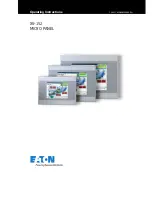
54
General Information
General Clutch Information
Function of a Clutch
Any modern day clutch, whether designed for an automobile
or heavy truck, performs several important tasks allowing for
safe and convenient operation of the vehicle.
In a vehicle powertrain, the clutch is the device that interrupts
the flow of power from the engine flywheel to the transmis-
sion. To start a gasoline or diesel engine, the flywheel must be
able to turn freely without propelling the vehicle. By disengag-
ing the clutch, the drivetrain is effectively disconnected from
the rotation of the flywheel allowing the engine to start.
Manual transmissions, whether synchronized (synchromesh)
or non-synchronized (constant mesh), require an interruption
of engine torque to complete a gear change. To make a gear
change, the clutch pedal is depressed, breaking torque. This
is followed by altering engine speed to more closely match the
transmission input shaft (clutch disc) speed. After the proper
gear is selected, the clutch pedal is then slowly released. As
the clutch disc(s) are compressed, the relative slip speed
between the flywheel and the transmission input shaft reaches
zero and the clutch is completely engaged and capable of car-
rying full engine torque. With non-synchronized gearboxes,
double clutching (a momentary partial engagement of the
clutch made while the transmission is in neutral) is often nec-
essary to allow rotational speeds of gears to become the
same and complete the gear change.
With the advent of transmission automation, breaking torque
and altering flywheel speed is accomplished via electronic
throttle control and engine braking. The clutch pedal is used
only when starting the engine, launching the vehicle from a
stop, and when the vehicle slows to a stop.
The last function of the clutch is mitigating torsional vibra-
tions. With any in-line, six-cylinder engine there are three (3)
distinct power pulses occurring during each revolution of the
flywheel. With each firing of a cylinder, the flywheel speeds up
then slows down, very quickly, resulting in a torsional vibra-
tion. This vibration can damage drivetrain components in
short order if left uncontrolled. The coil springs in a driven
disc damper absorb much of the vibration. The resonant (gen-
erally the least expensive drivetrain component) is considered
the “fuse” of the system. Failure of a clutch damper section is
usually an indication of a serious torsional vibration systems
problem or shock loading due to driver abuse.
Clutches are assemblies made up of many different compo-
nents utilizing many different types of materials. This section
describes the major components which make up a complete
Eaton Clutch installation.
The following are the major components used to make up a
clutch installation:
•
Cover Assembly (contains pressure plate)
•
Intermediate Plate – (only in 2-plate clutches)
•
Driven Disc(s)
•
Clutch Brake
Neutral Idle Rattle
Neutral idle rattle is a system issue. It occurs when the engine
is idling with the transmission in neutral and the clutch pedal
in the up position. As the engine idles, the firing pulses cause
the flywheel to oscillate as it is rotating. This oscillation is
transmitted through the input shaft and into the transmission
gearing. This oscillation causes the transmission gears to
impact one another resulting in a sometimes objectionable
noise. While this noise is an annoyance, it is in no way dam-
aging to the transmission and other components.
In the past, free travel dampers have been used to overcome
this phenomenon. As systems have changed, in terms of
mass, inertia, and fuel injection pressures, free travel has
become a less effective means of control.
Free travel, simply stated, is the free left or right rotation of
the driven disc hub before engaging the clutch damper. This
first stage isolates some of the flywheel oscillation energy and
prevents or reduces the idle rattle.
Pre-damper technology is now available in some medium-
and heavy-duty clutch applications and performs the same
function as the free travel. By adding a dampened first stage,
it is more effective at limiting neutral idle rattle. Generally, the
pre-damper springs are very small and softer in rate than the
main damper springs.
In diagnosing neutral idle rattle complaints, first try to fully
depress the clutch pedal. This will disconnect the engine from
the transmission. Secondly, try raising the engine idle speed
with the clutch pedal up. This may smooth out the engine fir-
ing and may reduce, or eliminate, the noise.
If you have neutral idle rattle, determine what clutch is
installed in the vehicle. It may already have a pre-damper
clutch in it. If it is already equipped with a pre-damper clutch,
then there is no benefit to changing the clutch.









































